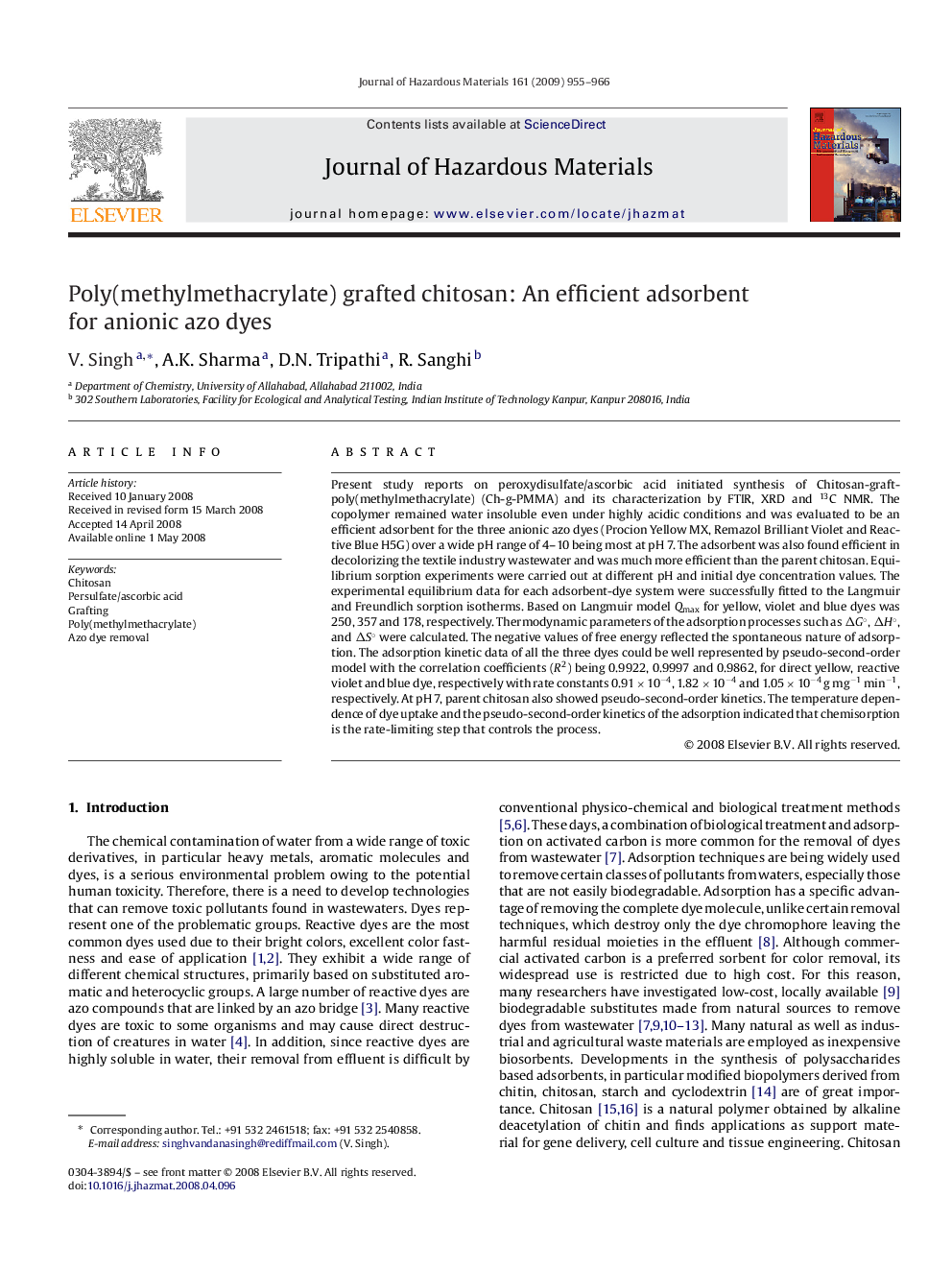| کد مقاله | کد نشریه | سال انتشار | مقاله انگلیسی | نسخه تمام متن |
|---|---|---|---|---|
| 582659 | 1453167 | 2009 | 12 صفحه PDF | دانلود رایگان |
عنوان انگلیسی مقاله ISI
Poly(methylmethacrylate) grafted chitosan: An efficient adsorbent for anionic azo dyes
دانلود مقاله + سفارش ترجمه
دانلود مقاله ISI انگلیسی
رایگان برای ایرانیان
کلمات کلیدی
موضوعات مرتبط
مهندسی و علوم پایه
مهندسی شیمی
بهداشت و امنیت شیمی
پیش نمایش صفحه اول مقاله

چکیده انگلیسی
Present study reports on peroxydisulfate/ascorbic acid initiated synthesis of Chitosan-graft-poly(methylmethacrylate) (Ch-g-PMMA) and its characterization by FTIR, XRD and 13C NMR. The copolymer remained water insoluble even under highly acidic conditions and was evaluated to be an efficient adsorbent for the three anionic azo dyes (Procion Yellow MX, Remazol Brilliant Violet and Reactive Blue H5G) over a wide pH range of 4-10 being most at pH 7. The adsorbent was also found efficient in decolorizing the textile industry wastewater and was much more efficient than the parent chitosan. Equilibrium sorption experiments were carried out at different pH and initial dye concentration values. The experimental equilibrium data for each adsorbent-dye system were successfully fitted to the Langmuir and Freundlich sorption isotherms. Based on Langmuir model Qmax for yellow, violet and blue dyes was 250, 357 and 178, respectively. Thermodynamic parameters of the adsorption processes such as ÎG°, ÎH°, and ÎS° were calculated. The negative values of free energy reflected the spontaneous nature of adsorption. The adsorption kinetic data of all the three dyes could be well represented by pseudo-second-order model with the correlation coefficients (R2) being 0.9922, 0.9997 and 0.9862, for direct yellow, reactive violet and blue dye, respectively with rate constants 0.91 Ã 10â4, 1.82 Ã 10â4 and 1.05 Ã 10â4 g mgâ1 minâ1, respectively. At pH 7, parent chitosan also showed pseudo-second-order kinetics. The temperature dependence of dye uptake and the pseudo-second-order kinetics of the adsorption indicated that chemisorption is the rate-limiting step that controls the process.
ناشر
Database: Elsevier - ScienceDirect (ساینس دایرکت)
Journal: Journal of Hazardous Materials - Volume 161, Issues 2â3, 30 January 2009, Pages 955-966
Journal: Journal of Hazardous Materials - Volume 161, Issues 2â3, 30 January 2009, Pages 955-966
نویسندگان
V. Singh, A.K. Sharma, D.N. Tripathi, R. Sanghi,